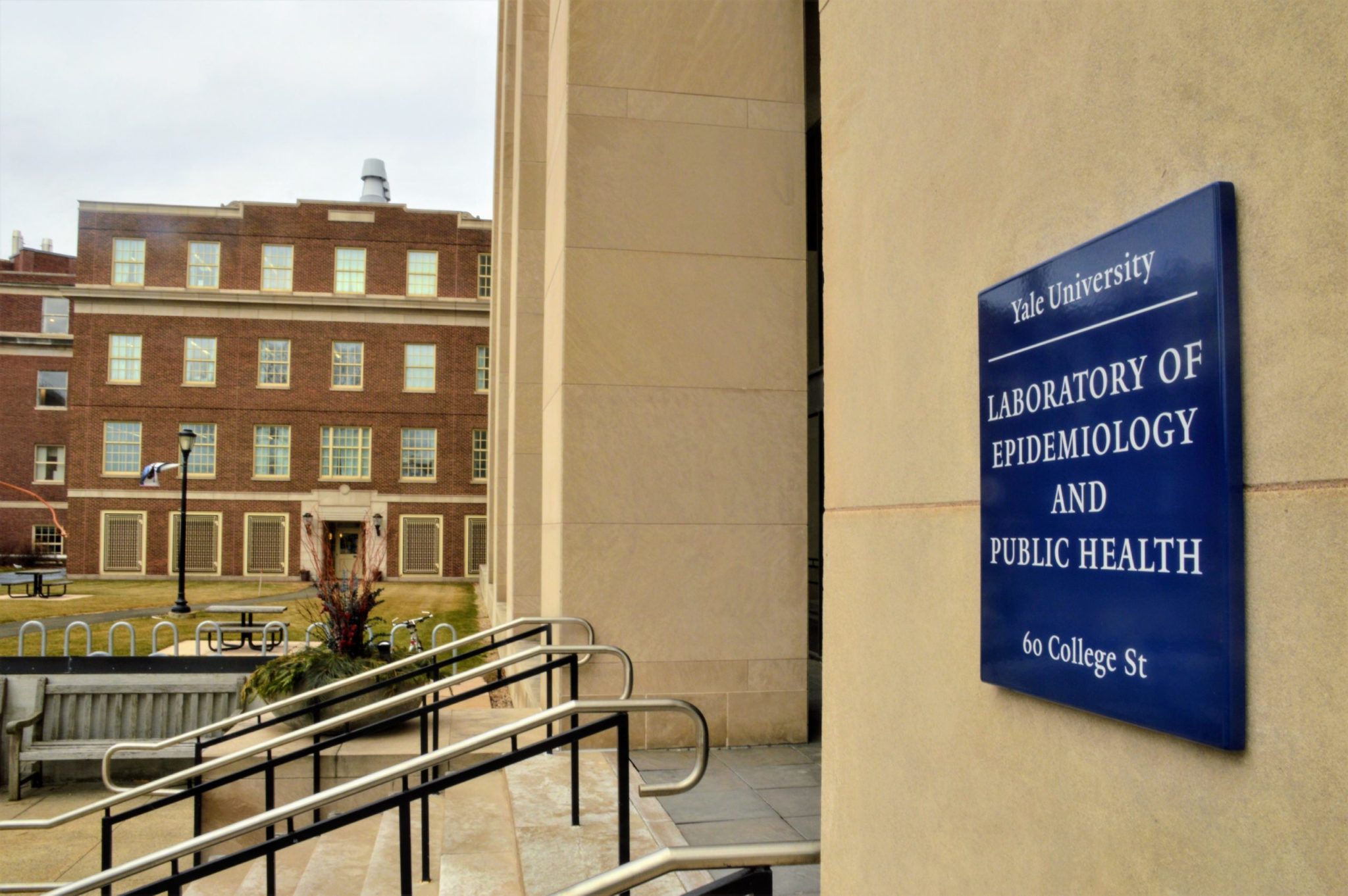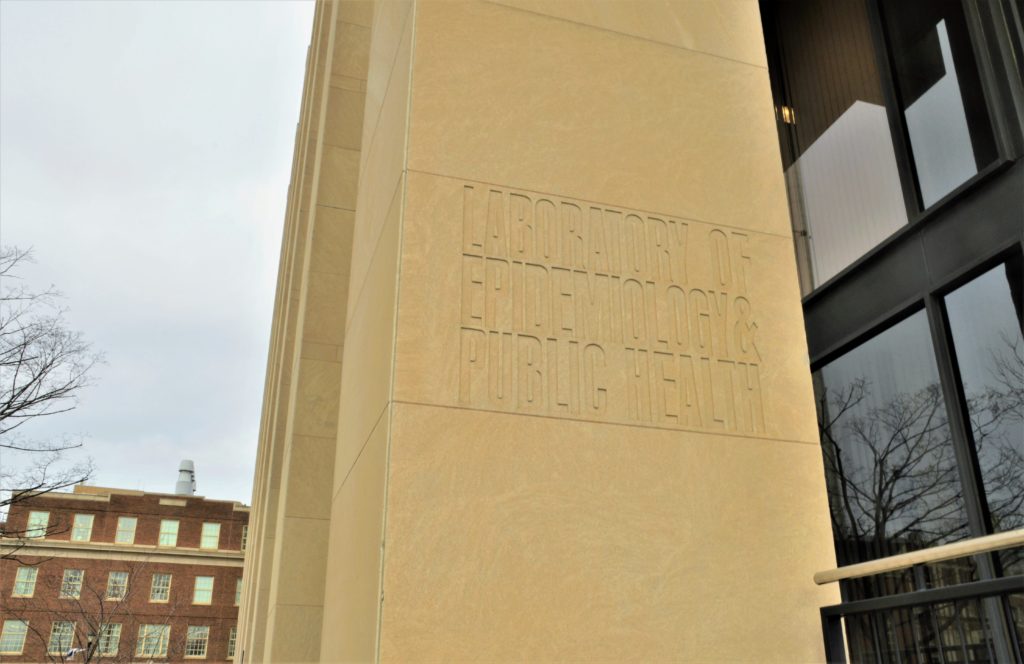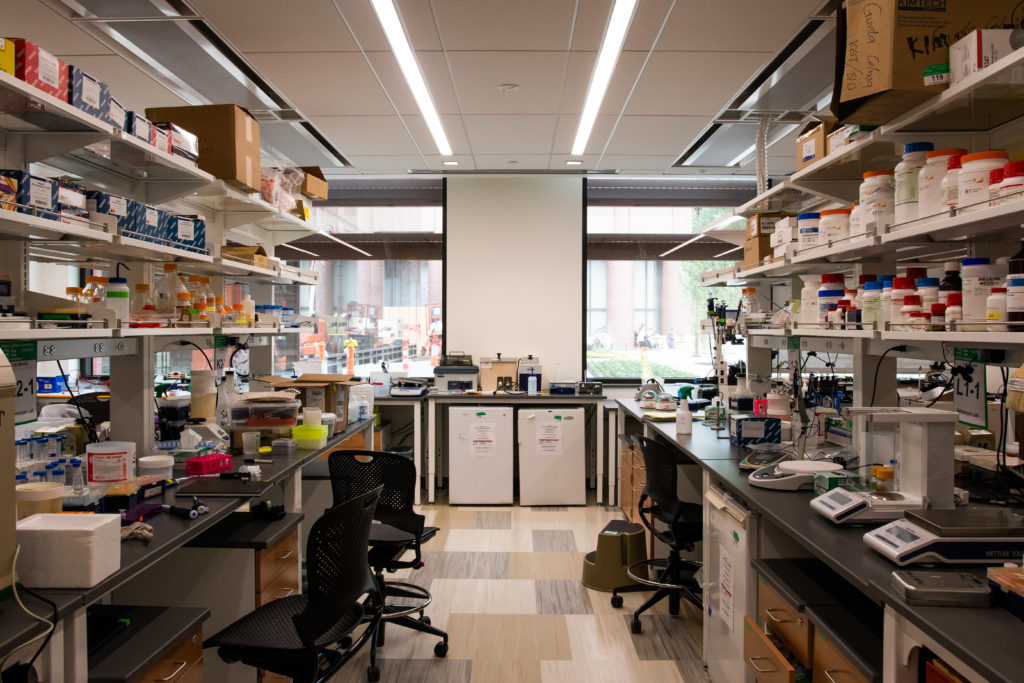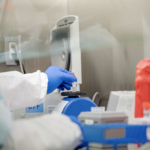Automation, pooling could come next for SalivaDirect as research team juggles authorization requests, media attention
After receiving Emergency Use Authorization from the FDA on Saturday, researchers have been inundated with a swarm of media attention and hundreds of emailed authorization requests.

Sonia Ruiz
Chantal Vogels was not expecting the news on a Saturday morning.
A postdoctoral fellow in the Grubaugh Lab at the Yale School of Public Health, Vogels helped lead the Emergency Use Authorization submission process for SalivaDirect — a new saliva-based testing protocol for COVID-19 — detailing validation data in the application and collaborating with the U.S. Food and Drug Administration as the process moved along.
By last week, she could sense the EUA was nearing. She was trading daily emails with the FDA, while Nathan Grubaugh — assistant professor of epidemiology, principal investigator in the Grubaugh Lab and the lead researcher behind SalivaDirect, alongside associate research scientist in epidemiology Anne Wyllie — was spending lots of time on the phone with the regulatory agency.
On Saturday morning, word suddenly came through: the FDA had issued an EUA for SalivaDirect, permitting other high-complexity laboratories to acquire the testing protocol for use and igniting a flood of popular attention.
“I think none of us would have expected it to be this big,” Vogels said. “We knew that we were getting to like the final stages … I was expecting it to be Friday or Monday. And then when it came, the media attention has just been crazy. We’ve been so overwhelmed. It’s really amazing to see how well it’s [being] received.”
Since the EUA has been issued, the team of scientists, accustomed to spending hours inside the lab and out of the limelight, has been ushered onto live news segments and quoted across the internet. Vogels, who is from the Netherlands and completed her bachelors, masters and PhD there, said family and friends in Europe were excited to see her appear live on CNN Monday. Grubaugh spoke with CBS This Morning and ESPN, while Wyllie did interviews with ABC News, MSNBC and more. A Twitter thread describing the test and its benefits from former Obama health care aide Andy Slavitt had garnered more than 22,000 retweets by Tuesday evening.
Yet as the media attention from Saturday’s EUA has continued into this week, researchers have been even more focused on what might come next, continuing explorations into improvements for the test and outlining a process for disseminating their open-source protocol to interested labs. Researchers are exploring the automation of sample processing, pooling of saliva samples for improved efficiency and modifications to SalivaDirect that would speed up processing by replacing the polymerase chain reaction step.
“Although SalivaDirect is a big step forward, it’s definitely not the end of it,” Vogels said. “It’s not the solution to everything … It’s a huge step forward, but it’s just one step of the many steps that are still ahead of us.”
Aside from improvements to the test, one of the most pressing steps for the researchers is distributing authorizations to labs and other groups interested in using SalivaDirect. Annie Watkins MPH ’21, who is helping to process correspondence from interested parties, told the News that the Grubaugh Lab had already received “hundreds of” emails inquiring about authorization by Tuesday morning.
As part of the terms of the FDA EUA, Yale’s Pathology Clinical Molecular Diagnostic Lab, led by Pei Hui, became the first laboratory authorized to administer and process SalivaDirect. All laboratories that subsequently receive authorization must be certified under the Clinical Laboratory Improvement Amendments of 1988 (CLIA).
Vogels and Watkins were not able to provide the names of any specific institutions or laboratories reaching out seeking authorization — and could not comment on whether Yale has inquired about using the test for its regular testing of students returning to New Haven this fall — but said the interest originated from a wide spectrum.
“It’s pretty broad [in terms of] who’s interested in things,” Watkins said. “There’s definitely some universities, university health systems that are interested in return to campus, potentially athletics. And there are one-off labs, there’s a few private practice type things [and some] international labs.”
The rollout has been complicated by the unique nature of SalivaDirect’s EUA. According to the Grubaugh Lab’s CovidTrackerCT website, SalivaDirect — which is not a testing kit for sale — is the first protocol to receive an EUA from the FDA. The protocol is currently posted as an open source, but “testing is limited to laboratories designated” by the Yale School of Public Health, per the terms of the FDA EUA.

Grubaugh wrote in a Twitter thread on Tuesday evening that due to the novel nature of the EUA, his team has to work with Yale and the FDA to come up with the legal conditions surrounding authorization as well as formalizing the regulation of the whole process. Once these regulations are in place, they will start by authorizing labs that will test schools, Grubaugh wrote.
The lead researcher, whose lab previously studied mosquito-borne viruses before the emergence of COVID-19, also addressed some misconceptions surrounding the testing protocols.
“What isn’t SalivaDirect?” Grubaugh wrote. “It isn’t a point-of-care or an at-home rapid test. It uses PCR, and thus requires a high-complexity lab … We don’t have products to distribute. Rather, for authorized labs, we can provide a protocol for doing inexpensive saliva-based RT-qPCR testing.”
He also noted that while SalivaDirect testing is not yet available to the public, the lab is working to create partnerships to allow for this in the future.
According to researchers, the next innovations for SalivaDirect include automation, rapid detection and pooling.
Automation will require the validation of robotic systems and will hopefully be applied to the sample processing and/or PCR steps. With regards to the second goal, Grubaugh wrote that they are also working on replacing the PCR step altogether, with either loop-mediated isothermal amplification or recombinase polymerase amplification. Pooling would allow researchers to combine saliva from many people and test it simultaneously, which could increase testing capacity and utilize reagent resources more efficiently.
Watkins said that running one plate with PCR ideally only takes three hours. But other variables, including transport time and high volume, can lengthen the process.
“It really depends on the lab,” Vogels added. “There’s a step between collecting the sample, getting it in the lab, doing the test, sending out a result, so in an ideal world the protocol itself might be a couple hours, but it’s not a rapid test.”

The lab’s study with the NBA — which offered funding for the validation process — is ongoing as researchers continue to explore how SalivaDirect works for asymptomatic detection. They are monitoring samples from one team outside of the bubble, according to Watkins, after players have stopped testing positive in the Orlando bubble. Vogels said the NBA study is also being used to study pooling.
SalivaDirect’s current EUA permits the test for “individuals suspected of COVID-19 by their healthcare provider.” The team could submit another EUA for asymptomatic screening with data from the NBA study, Watkins said, but FDA rules around tests for asymptomatic surveillance continue to evolve.
“As far as I know, I think there’s only one test or a few tests that have been authorized for testing asymptomatics,” Vogels said. “So I think this is really a dynamic process of figuring out what does it really mean, where can we apply this, and how does that really work, so we’re still working closely with the FDA to figure that out.”
Finally, performing bridging studies could also allow researchers to show the FDA that using different reagents or instruments down the road might work just as well, helping make the testing protocol more flexible for a wider range of labs.
But first come the emails that continue to pour in. For the researchers, this journey has been all-consuming but rewarding nonetheless.
“I’ve kind of forgotten that I’m a student,” Watkins said. “I’m supposed to be registering for classes this week, and I forgot the classes were a thing to be completely honest. This has become my life, and the student aspect seems like a previous life.”
William McCormack | william.mccormack@yale.edu
Charlotte Zimmer | charlotte.zimmer@yale.edu








